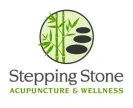![]()
This post is copied from our older, original blog. Original post date 01/21/2012.
By Marcie Bower, Lic.Ac.
Turmeric – a central spice in Indian cooking for more than 2500 years – is a powerhouse of a spice, known to have numerous health benefits. Turmeric is in the same family as ginger, and comes from the root of the curcuma longa plant. The root has a distinctive bright yellow/orange color – it is turmeric that gives Indian curries and American mustard their brilliant yellow color. It is used in the traditional cooking of India, Nepal, Thailand, Indonesia, South Africa, and the Middle East.
Turmeric has also been used medicinally in Indian and Chinese Medical systems for thousands of years, prompting recent scientific research into its health benefits. And what do you know? There are many! Research has included looking at turmeric as a whole spice and also at its active ingredient, curcumin. An overview published in Advanced Experimental Medical Biology states that “Curcumin has been shown to exhibit antioxidant, anti-inflammatory, antiviral, antibacterial, antifungal, and anticancer activities and thus has a potential against various malignant diseases, diabetes, allergies, arthritis, Alzheimer’s disease, and other chronic illnesses.”
Preliminary scientific studies have shown that turmeric and curcumin may be effective in treating lung damage, skin diseases, Alzheimer’s disease, heart failure, colitis, stomach ulcers, high cholesterol, upset stomach, scabies, diabetes, HIV, and viral infections.
In Traditional Chinese Medicine, turmeric is used as a vital herb in herbal formulas for treating pain, swelling, or toxicity in the body. It “invigorates the blood” and moves qi to unblock the flow of energy in the body. In TCM, turmeric is thought to be a great pain-reliever, particularly for menstrual pain, abdominal pain, neck pain, or pain in the upper limbs. Now that we understand more about its anti-inflammatory properties, this is easy to understand! Turmeric has also been used for thousands of years in TCM to reduce toxicity – applied externally for sores or internally for sickness (and when thinking of toxicity, just think of its anti-cancer properties that are being discovered today.)
It is easy to work Turmeric into your daily diet. There are loads of great turmeric recipes on the internet. If you like the taste of turmeric, Holistic Health Advisor Andrew Weil, MD, recommends a great, easy recipe for making a turmeric tea here.
So work that powerful yellow root into your diet, and know that you are relying on thousands of years of natural healing goodness to take you on your road to health and healing.

